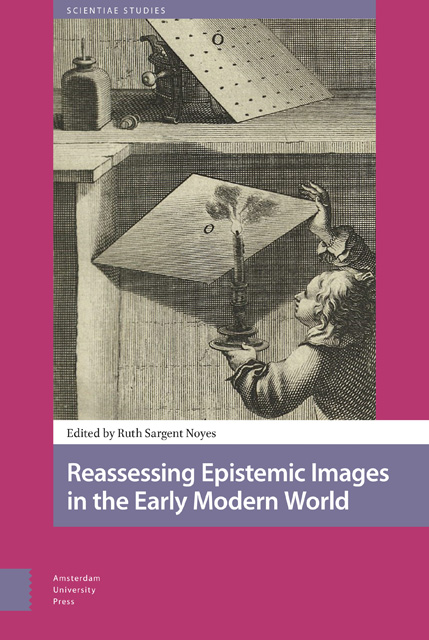Book contents
- Frontmatter
- Dedication
- Table of Contents
- 1 Prologue: For a Metaphorology of Engraving: From Epistemic Images to an Imaged Epistemology
- 2 Introduction: Pittura filosofica: Etching Galileo’s Sunspots and the Discursive Field of Early Modern Epistemic Images
- Part 1 Approaches to Print Matrices
- Part 2 Imprints as Instruments
- Part 3 Imprint, Knowledge, and Affect
- Bibliography
- Index
4 - Meticulous Matrices: Building a Chronology of Albrecht Dürer’s Meisterstiche Impressions through the Analysis and Documentation of Microscopic Scratches in His Engraved Plates
Published online by Cambridge University Press: 15 June 2023
- Frontmatter
- Dedication
- Table of Contents
- 1 Prologue: For a Metaphorology of Engraving: From Epistemic Images to an Imaged Epistemology
- 2 Introduction: Pittura filosofica: Etching Galileo’s Sunspots and the Discursive Field of Early Modern Epistemic Images
- Part 1 Approaches to Print Matrices
- Part 2 Imprints as Instruments
- Part 3 Imprint, Knowledge, and Affect
- Bibliography
- Index
Summary
Abstract
This chapter reviews the methods and results of an in-depth comparative study of Albrecht Durer’s three meisterstiche – Melencolia I, Knight, Death, and the Devil, and St. Jerome in His Study. As a plate is prepared for printing, hard and sharp fragments of burr residue and inclusions in the printing ink are repeatedly rubbed across the matrix: fine scratches appear on the surface of the plate almost immediately and the crisp edges of the engraved areas are gradually worn down, making the cut lines softer and less well-defined. By digitally recording and comparing the marks of deterioration on each of the meisterstiche impressions, this study reconstructs a chronological sequencing method for individual impressions to offer new, diverse information about Dürer’s work.
Keywords: Durer, meisterstiche, chronology, plate wear, digital Documentation
Introduction
Despite Albrecht Durer’s enormous artistic output, immediate success in various media, and more than five centuries of scholarship devoted to his work, current research continues to reveal information related to his choice of materials and techniques. Given their wide distribution as prints, Durer’s three meisterstiche impressions – Knight, Death, and the Devil (1513) (Figures 4.1 and 4.2) St. Jerome in His Study (1514) (Figure 4.3); and Melencolia I (1514) (Figures 4.4 and 4.5) – have been admired and closely studied, perhaps even more than his paintings and drawings. Of the hundreds of known extant impressions of these works, many were cataloged by Bartsch (1803–1821), Meder (1932), and Hollstein (1954). These and other studies variously describe Durer’s impressions as rich, clean, with burr, excellent, poor, lighter, darker, silvery, brownish, and/or tonal. In light of the inherent subjectivity in judgments of impression quality, this essay outlines the author’s in-depth comparative study across and between impressions carried out using a modified digital camera and modern imaging technology.
As a copperplate such as those produced for the meisterstiche is inked for printing, the hard and sharp fragments of microscopic burr residue left by the burin and inclusions in the carbon-based ink pigment are repeatedly rubbed into its lines for hundreds of impressions, and the condition of the metal matrix gradually declines.
- Type
- Chapter
- Information
- Reassessing Epistemic Images in the Early Modern World , pp. 83 - 108Publisher: Amsterdam University PressPrint publication year: 2022



